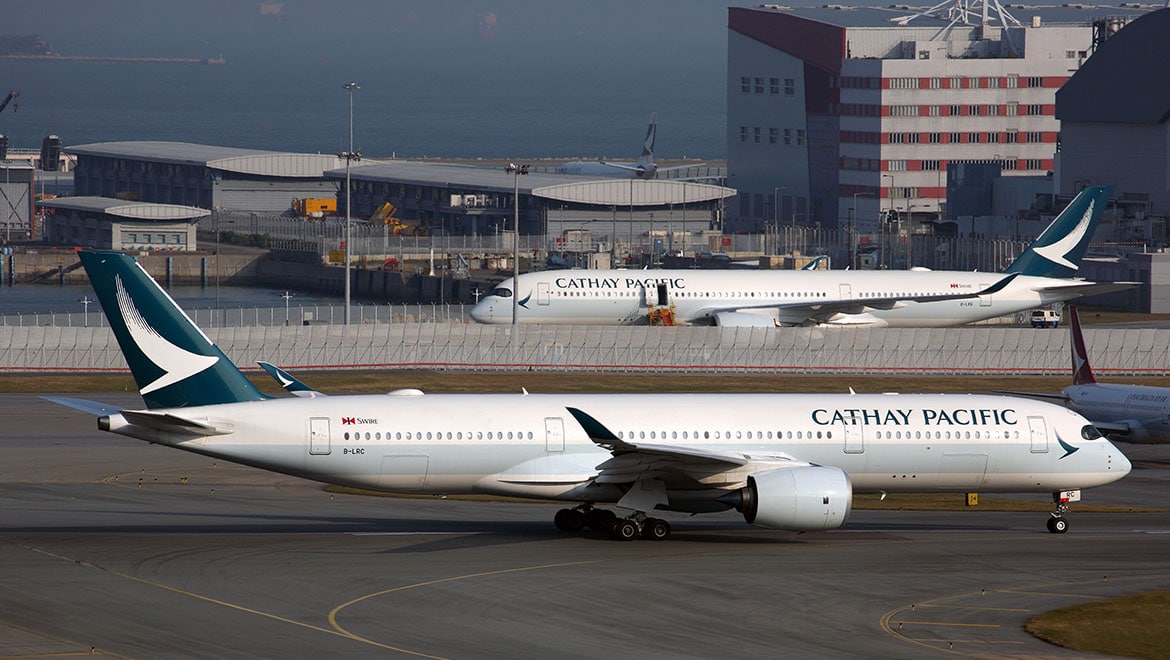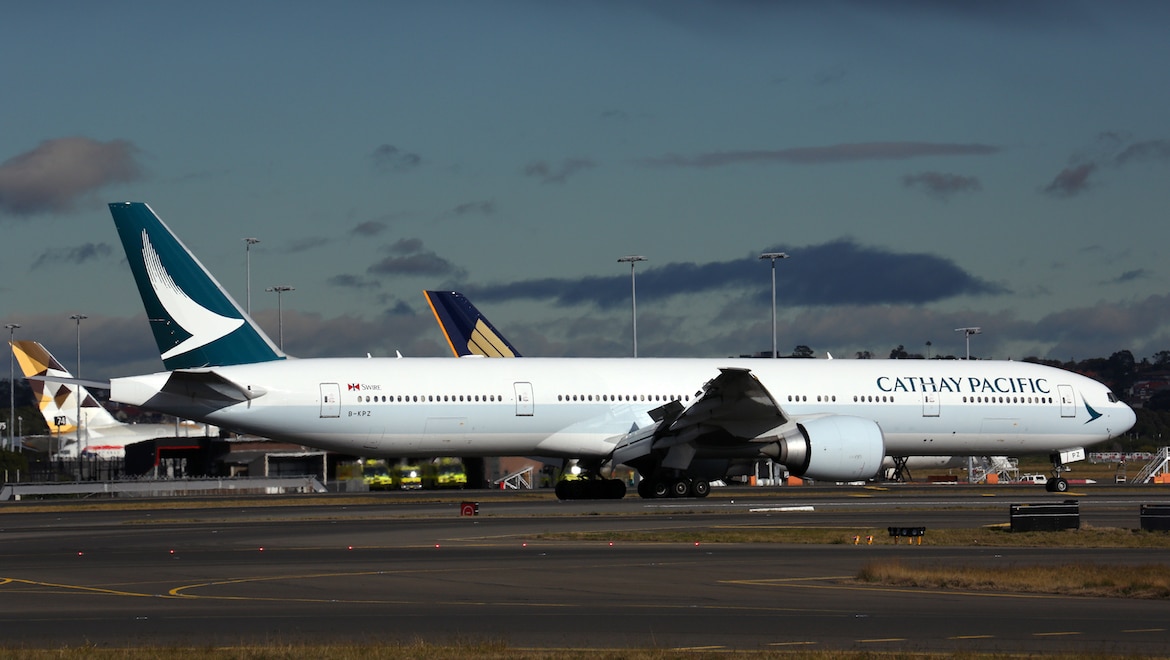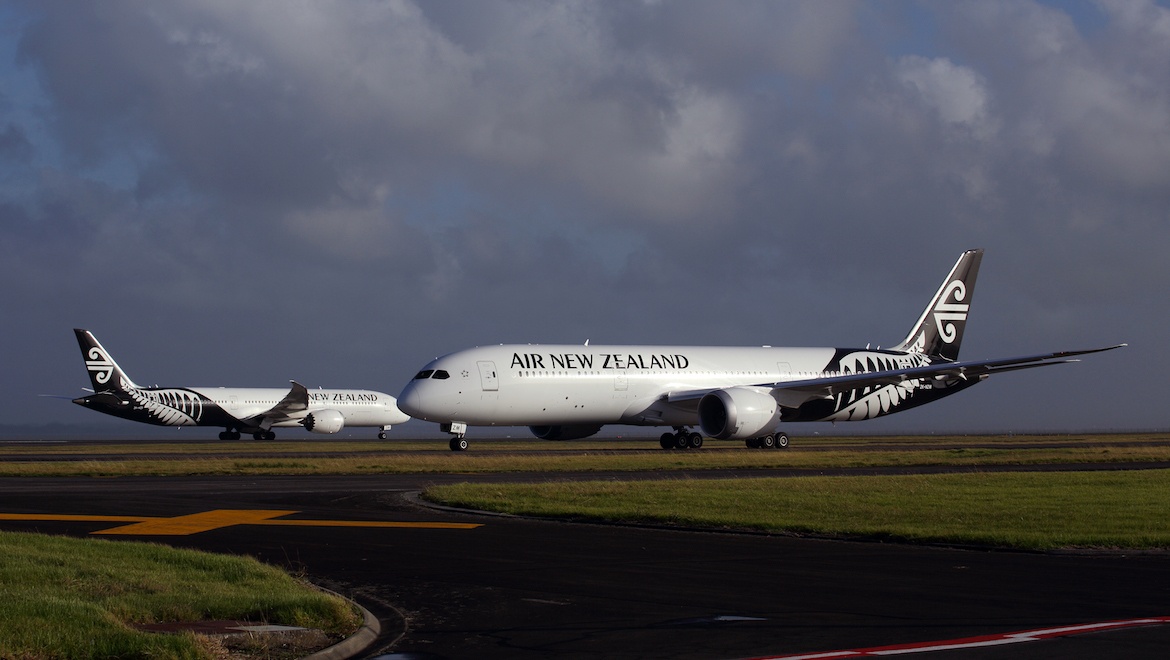
Air New Zealand says it has leased two aircraft from alliance partner Cathay Pacific as cover while its fleet of Boeing 787-9s undergo required engine checks.
A Cathay Pacific Airbus A350-900 will take over Air New Zealand’s Auckland-Hong Kong nonstop flight between January 6-19 2020. The route would then be flown daily in February and five times a week in March by a Cathay Pacific Boeing 777-300ER.
Air New Zealand said on Thursday passengers affected by the aircraft change would be automatically transferred to the Cathay Pacific-operated services.
Air New Zealand senior manager for customer care and communications Doug Grant said the Cathay Pacific aircraft would help fill gaps in the airline’s schedule.
“The Cathay Pacific Airbus A350-900 and Boeing 777-300ER are modern aircraft of a similar high standard to our Air New Zealand fleet, so we know customers will receive the high level of service Cathay Pacific is known for,” Grant said in a statement.
“This aircraft capacity will help fill the gaps in our schedule to get people to their destinations in the coming weeks and it’s been beneficial to have our alliance partner Cathay Pacific step in and assist us at this busy time.”
Air New Zealand said the Cathay Pacific 777-300ERs had 294 seats spread across business, premium economy and economy, while the A350-900s have 280 seats, also in a three-class configuration.
Cathay Pacific and Air New Zealand have a joint-venture partnership covering flights between New Zealand and Hong Kong since 2012.

Air New Zealand has been hampered by issues with the Trent 1000 TEN engines that power a number of its 787-9 aircraft since 2017 due to durability concerns with the high pressure turbine (HPT) blades.
Those durability concerns have led to more regular maintenance checks, as mandated by an airworthiness directive from the European Union Aviation Safety Agency (EASA).
In November, Air New Zealand said it had reduced its flying schedule over the Christmas/New Year period due to the required checks on the 787-9 fleet’s Rolls-Royce engines.
As a result, a seasonal two times weekly flight between Christchurch and Perth was no longer going ahead this summer. A previously planned second daily Auckland-Perth nonstop flight between December 10 2019 and January 5 2020 would also no go ahead.
There were also flight cancellations on the Auckland-Sydney and Auckland-Tonga routes.
Air New Zealand has said previously its Trent 1000 Package C engines were unaffected by the HPT blade issue.

Earlier in 2019, Rolls-Royce said it expected the number of Boeing 787s impacted the Trent 1000 engine issue to remain in the double-digits until at least the second quarter of 2020.
The engine maker had previously targeted having fewer than 10 aircraft on the ground (AOG) due to the Trent 1000 engine problem by the end of calendar 2019.
Rolls-Royce said the delay was due to additional maintenance, repair and overhaul (MRO) load “resulting from from faster deterioration of the high pressure turbine (HPT) blade on the Trent 1000 TEN”.
Further, the company said it had also taken, since August, a “proactive decision to accelerate intermediate pressure turbine (IPT) blade replacement for the limited number of Package B and C engines yet to be fitted with the final standard of IPT blade”, which had led to additional engine removals.
In terms of a long-term fix to the problem, Rolls-Royce has redesigned IPC rotor blade for Trent 1000 Package C and Trent 1000 TEN engines.
Also, Rolls-Royce has said previously regulators recently changed a hard life limit on a compressor drum on the Trent 1000 TEN engines to an inspection regime, which had also helped reduce the disruption to airlines.










